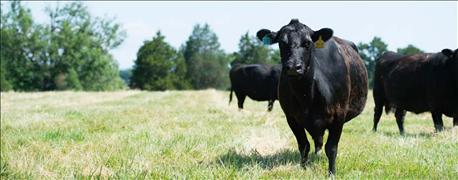December 1, 2016

Which comes first, calving or rebreeding? You might put all of your eggs in the calving “basket,” since a live, healthy calf is often first priority. But a calf is ultimately the result of a successful breeding period, and preparation for calving and rebreeding should occur simultaneously.
 Preparation for calving and rebreeding should occur simultaneously. (Photo: Purina Animal Nutrition)
Preparation for calving and rebreeding should occur simultaneously. (Photo: Purina Animal Nutrition)
“Calving and rebreeding ideally occur within a relatively short, but very critical, 85-day window,” says Chad Zehnder, Ph.D. and cattle consultant with Purina Animal Nutrition. “How a heifer or cow calves out at the beginning of the window will impact her ability to get bred at the end of the window, and how quickly rebreeding occurs will impact a cow’s ability to stay on a 365-day calving cycle.”
Here are four strategies you can implement now to prepare for spring calving and rebreeding:
1. Monitor body condition score
The body condition score (BCS) of a cow at calving not only affects colostrum quality, cow stamina (to get through birthing) and calf vigor, it also impacts the time until that cow starts cycling again.
“We want cows cycling prior to the breeding season so that when they come into heat during breeding season we have a better chance of getting them bred in the first 21 days. Cows bred early in the breeding season will result in calves born early in calving season,” says Zehnder.
Calf age has the biggest impact on weaning weight. Therefore, calves born in the first 21 days of the season are likely heavier at weaning. If you estimate that a calf gains between 2.25 to 2.5 pounds per day, every heat cycle is worth roughly 50 pounds. That’s why it’s so critical to get cows rebred on the first cycle.
 Chad Zehnder, Ph.D. and cattle consultant with Purina Animal Nutrition.
Chad Zehnder, Ph.D. and cattle consultant with Purina Animal Nutrition.
Mature cows should calve in at a minimum of 5.5 BCS, but preferably at a score of 6. Heifers should calve at a minimum score of 6. Supplementation can help maintain a consistent BCS, which can lead to cows breeding back quickly, optimized conception rates and heavier calf weaning weights.
2. Evaluate your mineral program
Mineral nutrition is one of the most commonly overlooked items on the calving and rebreeding preparation list.
“We tend to think about the importance of minerals either right at calving or before breeding, but we need to make sure we’re providing an adequate mineral program year-round,” says Zehnder. “Minerals are especially important 60 to 90 days before calving, since they impact colostrum quality, calf trace mineral status and calf health.”
Minerals also play a role in tissue repair, helping the cow’s reproductive tract repair from calving and prepare for breeding. If the tract is not fully repaired, a cow may have challenges being rebred or she may not breed back at all.
A program with highly bioavailable trace mineral sources can be of benefit, especially leading up to calving season and through breeding.
3. Discuss herd health with your veterinarian
If you don’t have a comprehensive herd health program, now is the time to talk with your veterinarian or animal health supplier to develop one. If you have a program, it can be beneficial to re-evaluate and ensure the protocols still make sense.
“Make sure you have a vaccination program in place for both cows and calves,” says Zehnder. “Since every operation has a different risk level in how and when they calve, the program should be specific to your operation and region.”
For operations with multiple employees, make sure everyone is familiar and comfortable with the program ahead of time. Getting everyone on the same page before calving begins can help ensure protocols are followed correctly and consistently.
4. Take time to troubleshoot
Calving and rebreeding are two of the most important events for an operation’s bottom line, which makes it stressful when things don’t go as planned. However, an overreaction may make things even worse.
“It’s easy to get frustrated when there’s a bump in the road, but it’s important to take an objective approach when a challenge arises,” Zehnder says. “Troubleshoot and try to figure out what the true cause is versus making a knee-jerk decision.”
Involve your nutritionist, veterinarian, suppliers, employees and other key personnel to help work through a cause and solution. A team discussion can help identify the diagnostic work needed to find a solution.

Regardless of which takes priority in your mind, calving and rebreeding success is always in season.
“We need to think about that critical 85-day window year-round. Every management decision we make throughout the year should focus on a cow delivering a live, healthy calf and being bred back in that timeframe,” says Zehnder.
Source: Purina Animal Nutrition
You May Also Like




